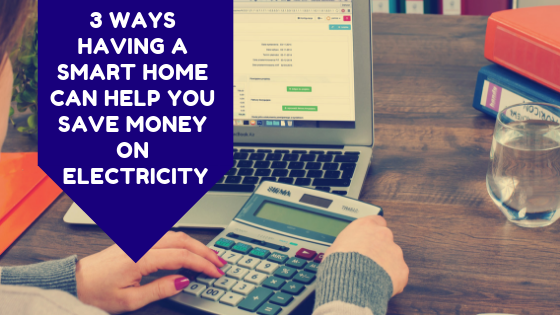
Electricity bills are one of the largest and most costly expenses in Australian households. According to the Australian Bureau of statistics, electricity bills have gone up by more than 26% since 2009-10. Australians are not only paying more for electricity, but they’re also using more electricity than ever before, with the average house having more than 10 devices on standby at all times each and every day.
What if there was a way to use the internet to help you save on electricity and power bills? With the emergence of smart homes and increasingly interconnected smart technologies, it is actually possible to save on power and money in your home.
Option 1: Smart Plugs
One of the most common methods often recommended to people looking to save on electricity is to turn off your devices that are on standby as many devices including things like gaming consoles or pc’s can still draw out a lot of power when on standby, but sometimes it’s a bit of a hassle to consistently maintain this habit. Your power board for these devices might be behind a heavy cupboard or in a difficult to reach area making it hard to turn everything on standby off every day.
Turning on and off devices and putting them on standby when you have a smart home doesn’t have to be such a hassle. With Smart plugs, you can plug them into the power socket in your wall. Then plug your devices into them. Once done, you connect the smart plug to your Wi-Fi and download the app for it on your phone. You can then control which devices in your home are on or off in every room using the smart plug they are connected to. Some smart plugs also offer the ability to monitor the power usage of each device and even set budgets or timers for how much energy the device plugged into it can use.
Smart Plugs can be helpful when saving electricity as you can simply turn everything on standby off completely when you’re asleep or away from home. Then all you need to do is turn them back on when you get back home or when you need them.
Option 2: Energy Efficient Lighting
Inside smart homes a person can have installed what’s known as ‘smart lighting’ or ‘smart lights’. These lights connect to a home’s Wi-Fi and can usually be controlled with a smart-phone app, Google Home device or Amazon Alexa.
The ability to control your home’s lights using a smart phone app can save you on a little electricity while you are away, it can also be used to control lights in far away sheds from your property without you having to go out to see what’s going on. Normally those lights might stay on all night or until you’ve returned to that room and this will waste a lot of electricity, but it doesn’t have to be that way. With the app you can easily check the lights you may have forgotten to turn off or left on when you left home for the weekend and then you can easily switch them off from wherever you may be with your phone.
Most modern smart home lights operate as LED lights. LED lights are much more energy efficient than traditional light bulbs, they use less electricity when on and emit less heat as well.
Option 3: Smart Thermostats
Thermostats have been around for a long time and they are used to regulate the temperatures in a home. A smart thermostat has extra features that can help save power when you’re not home. Smart thermostats generally operate in two ways. Some models come with sensors that will know when you’re home and when you’re not and will automatically regulate the temperature when the sensors know you are at home. Other smart thermostats use tracking of mobile devices through their apps to know when you are in your home or in range of your home. When there are extra features like sensors or location tracking, your thermostat is able to automatically regulate your home’s temperature based on your habits each week.
It’s possible based on the settings you choose and the features available on your thermostat to control both air conditioners and fans with it so that you can get the best power saving and temperature balance and by doing so this may reduce your electricity bill.
An important thing to keep in mind with these technologies is that even though they can save you on electricity, they do have a cost to purchase and it’s something that should be considered. Some of these devices are very expensive and it can take some time to recoup the costs of acquiring them on your electricity bill. Also keep in mind that when using all of these internet powered devices in your home that you might need to keep an eye on your data limit if you have a plan with metered quota’s. However, in the long term, these purchases may save you quite a bit on your electricity bills.



